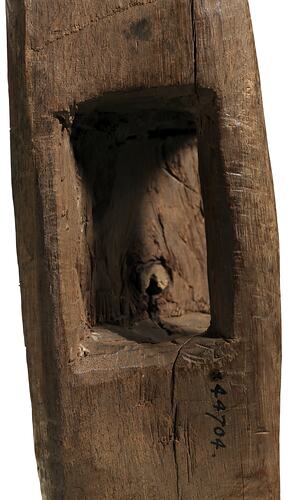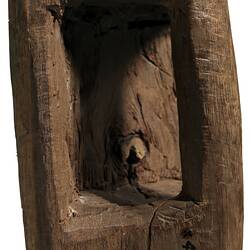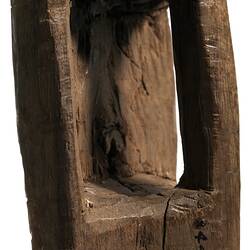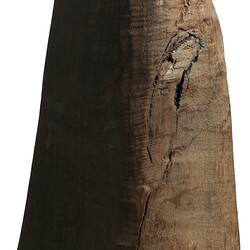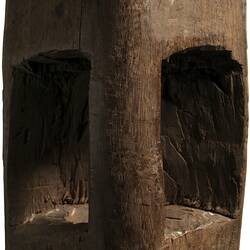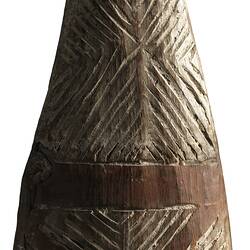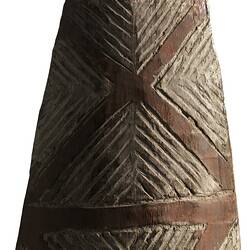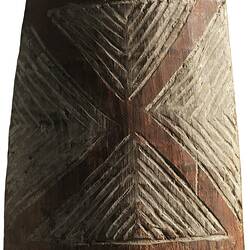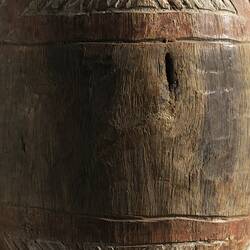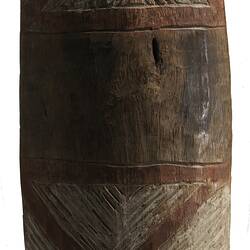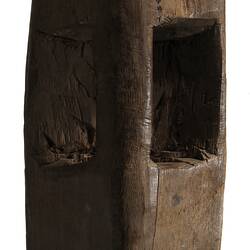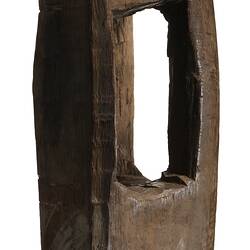Summary
This mulga was used by a Wurundjeri man as a parrying shield during close combat to defend against the blows of hand-held weapons such as *the kud-jee-run and the leon-ile (throwing stick and heavy-headed club).
A piece of possum fur may originally have been wrapped around the body of the shield and through the handle, covering the central undecorated band. The fur served to protect the user's hands and knuckles from rubbing against the hard shield during battle.
White pipeclay was used as a pigment to decorate wooden weapons and implements and was used as body paint during mourning and for dancers in ceremonies. It was often quarried from salt pans near river banks and mixed with water or spittle before being applied. Red colouring on shields was created using at least two materials, including red ochre obtained from mines or through trade, and a red dye obtained from a particular root.
Local Name
Mulga
Physical Description
Carved wooden shield with incised, painted decoration. The front of the shield is convex in shape, tapering towards the ends. The surface is decorated with an incised geometric design which has been painted with red and white ground mineral pigments. A rectangular area in the centre of the design has been left undecorated. An area directly behind this at the back of the shield has been hollowed out to form a handle.
Significance
The Wurundjeri people of the Woi Wurrung language group are the recognised Traditional Custodians of a large, geographically diverse region of Victoria.
Clubs, eel traps, baskets, shields and boomerangs continued to be made by the First Peoples of south-eastern Australia well into the 20th century both for personal use and as items of trade. Many Aboriginal groups throughout south-eastern Australia continue to make these items today, keeping skills and knowledge alive. In Victoria today, Aboriginal communities continue to grow and to celebrate their living, vibrant culture.
The Wurundjeri Tribal Land Council is a hub for cultural activity, providing the Wurundjeri peoples with opportunities to connect with, preserve and continue their cultural heritage as well as working in various aspects of the management of Wurundjeri lands, including cultural heritage undertakings such as the management and care of sites of significance.
More Information
-
Object/Medium
Shield
-
Maker
-
Locality
-
Date Produced
-
Date Collected
-
Object Measurements
720 mm (Length), 110 mm (Width), 90 mm (Height)
-
Classification
-
Date Made
-
Maker
-
Clan/Language Group
-
Place Made
-
Indigenous Region
-
Keywords
-
Collection Names
-
Type of item
-
Discipline
-
Category
-
Collecting Areas
